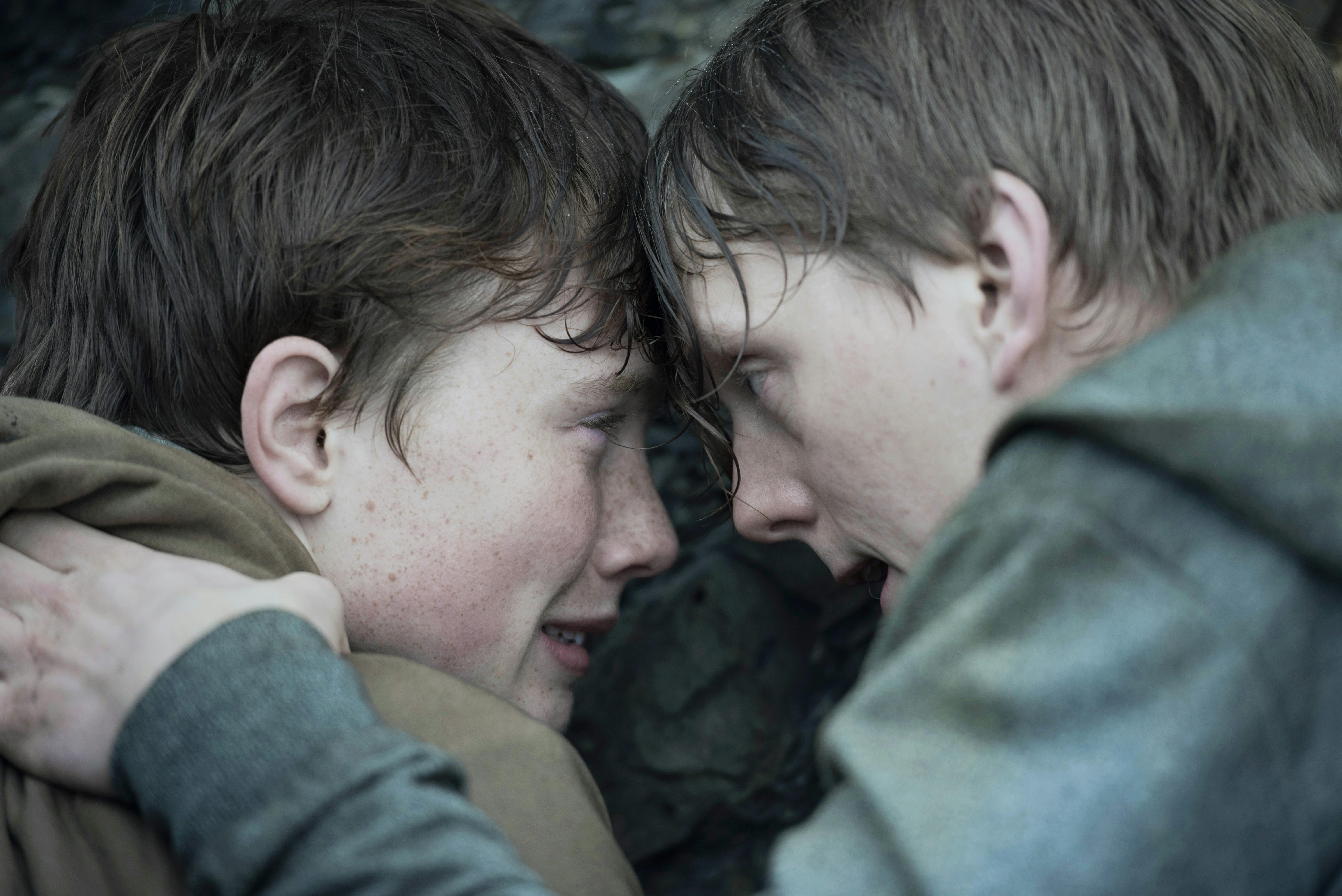



The British director Paul Greengrass has made dramatizations of real-life events, especially blood-spattered disasters, the mainstay of his career. The Murder of Stephen Lawrence (1999) retells the racist murder of a London teenager. Bloody Sunday (2002) and Omagh (2004) address the Irish Troubles. And United 93 (2006) is a claustrophobic take on the September 11 terrorist attacks. All depict ordinary people in extraordinary situations. In those films and now in 22 July, a reconstruction of the 2011 murder of 77 people by Norwegian white nationalist Anders Breivik, Greengrass turns a major news item into something else: a story.
There are many challenges in such an approach. Greengrass must put a human front and center of his narrative. In 22 July, it is Viljar Hanssen, a teenage boy wounded badly by Breivik in the shooting. He must represent not only his own story of survival, but also the full scale of the atrocity, which may be more than his narrow shoulders can bear.
The movie begins with a series of contrasts. Raucous teenagers arrive at the socialist Workers’ Youth League summer camp on the island of Utøya, a peaceful scene. Then we see Breivik (Anders Danielsen Lie) blending chemicals in several household juicing machines. Happy, affectionate Norwegian teens speak to each other in strongly accented English. Breivik detonates a truck bomb in Oslo. The teens enjoy a campfire singalong, and earnestly engage in political debates.
Then the two narratives merge. After the Oslo bomb terrifies Norway, a person claiming to be a cop shows up at the island to check that everybody is okay. “What’s in the cases?” a camp worker asks. “Weapons,” he replies. “Well,” she says, “you’ll have to cover them up, they’ll scare the children.” “Sure,” he says, before shooting her dead underneath a large banner that reads, “WELCOME.”
Viljar (Jonas Strand Gavli) instantly becomes the focus. The shooting rampage is over within half an hour of the movie’s beginning. We don’t see the children’s faces as they die, but we do see them shot in the back. We spend several minutes with Viljar, his little brother, and several other children huddled against a cliff face, trying to stay out of Breivik’s sight. There is a certain restraint at work, as if Greengrass is stepping back from the extreme intimacy of the violence in United 93, but to hear children whimpering in fear manages to be more disturbing.
Viljar and his brother survive, but the former only with massive injuries. These include the loss of one eye, motor impairments, and inoperable bullet shrapnel embedded near his brainstem. As Viljar struggles through depression and physiotherapy, he becomes an embodied metaphor for Norway as a whole. The shrapnel inside him (which could shift and kill him at any time) represents the remains of Breivik’s horrific actions, the trauma that Viljar and all of Norway will have to bear forever. When his body is scanned in a machine it is almost as if the country is being examined for damage.
The movie at this point transitions into a broad political allegory. Viljar forces himself into rehabilitation, and eventually faces down his attacker in court, declaring that he still has family, dreams, love, and hope, while Breivik—who is eventually sentenced to life in solitary confinement without parole—has nothing. Breivik spouts his anti-immigrant, Islamophobic rhetoric, telling police, “This is a military operation. A coup d’etat. The bomb has removed the government and here I have liquidated a political camp.” At one point his own lawyer says, “Norway isn’t on trial. You are.” Breivik replies, “Are you sure about that?”
Jonas Strand Gavli is terrific in the role of Viljar, conveying the unimaginable terror of trying to defend a younger sibling during the Utøya ordeal, then bringing the viewer into the dark bedroom of a depressed teenager. But the movie’s most interesting character is Lara, a friend of Viljar who survives the attack but loses her sister. She functions as a barometer of emotional health for Viljar, and, as a non-white Norwegian, her visits to him in hospital symbolize the ongoing solidarity of their community.
In an interview with The Guardian, the real Lara Rashid, whose family left Iraqi Kurdistan in the late 1990s, expressed disappointment both with 22 July and the Norwegian movie U, by Erike Poppe, which was largely fictionalized. By using “four white men as his main characters,” Rashid said, “Greengrass removes parts of the story.” Those four men are Viljar, Breivik, Prime Minister Jens Stoltenberg (Ola G. Furuseth), and Breivik’s lawyer (Jon Øigarden). “Maybe he just finds that easier to relate to,” Rashid said, “but he should be making more of an effort to represent other sides.”
Greengrass is trying to make a bold, perhaps crude, point about the potential of young cosmopolitan socialists versus a damaged man’s white supremacist rage. But Breivik’s anti-immigrant views are totally wrapped in misogyny; in the manifesto he circulated online he wrote that feminism sought “to deny the intrinsic worth of native Christian European heterosexual males.” Greengrass focuses on his anti-immigrant sentiment to the total exclusion of his anti-feminism. The only notable women in the movie are Rashid’s own minor portrayal, and Viljar’s mother Christin (Maria Bock), who becomes the mayor of Svalbard.
The story of Viljar is an apt one for Greengrass’s reading of events: that there is more than one kind of political identity available for Norwegian men, and that Viljar’s is the one that will survive into the future. The cinematography of 22 July is moody and dark, all low light and pained faces. The film is about atmosphere and anger, and Greengrass achieves that effect through tight focus on individuals. But the result is imperfect, because it elides crucial elements of the whole story. We feel Viljar’s pain, and through him we feel the pain of Norwegians—or at least some Norwegians.

No comments :
Post a Comment